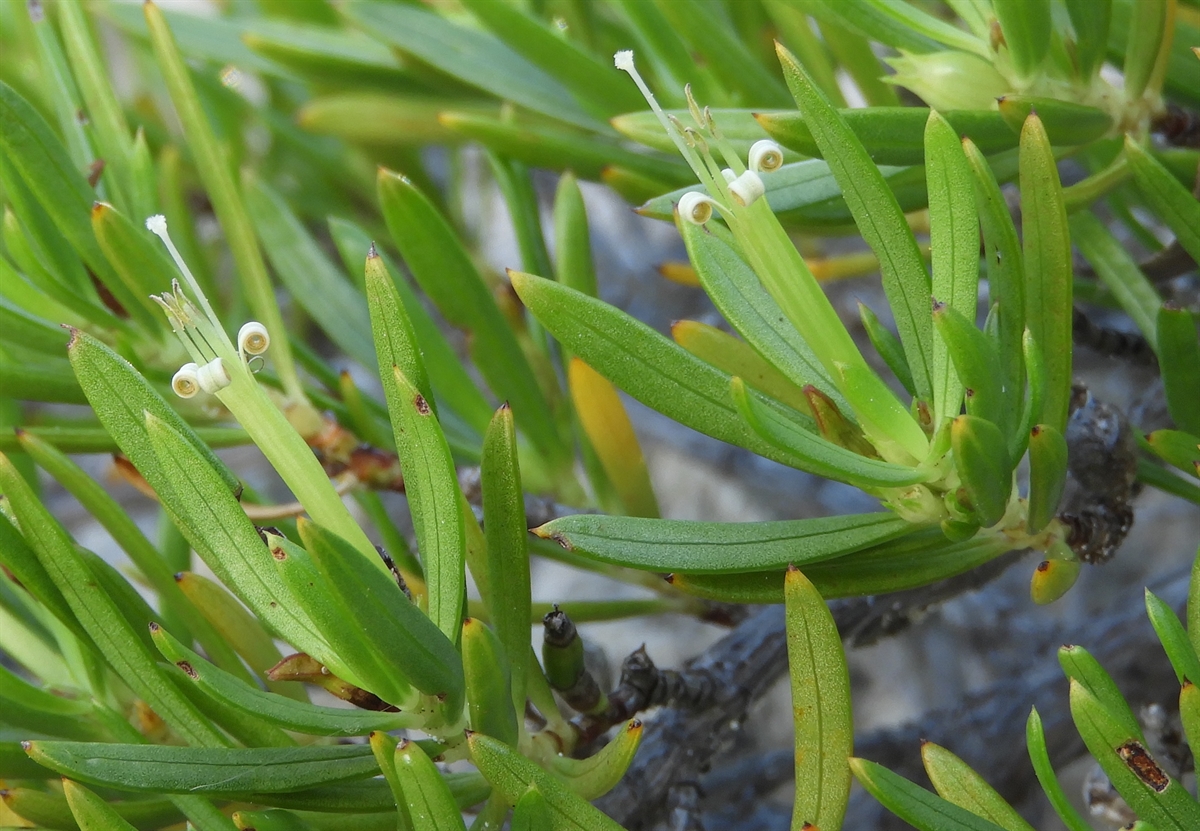Habit: Ernodea nashii grows as a small prostrate shrub to 40 cm in height. The leaves are arranged oppositely with no petiole, to 5 cm long, linear with an mucronate leaf apex and an entire margin. There is a single visible vein.
The complete, perfect, actinomorphic flowers arise solitarily from the leaf axils. The calyx has 4 green unfused sepals. The corolla has 4 fused, white petals that form a tube 4-5 times the length of the calyx. There are 4 stamens fused to the mouth of the corolla tube. The ovary is inferior with 2 locules. The fruit is a 1 or 2-seeded drupe/berry that is golden yellow at maturity.
Habitat: Ernodea nashii grows in sand substrate typically behind dune systems as well as in open Dry Broadleaf Evergreen Formation – Shrubland that are on a sand substrate.
Distribution: Ernodea nashii is endemic to the Lucayan Archipelago only known to occur on Great and Little Inagua.
Medicinal/Cultural/Economic usage: Ernodea nashii is not known to be used medicinally in the Lucayan Archipelago.
